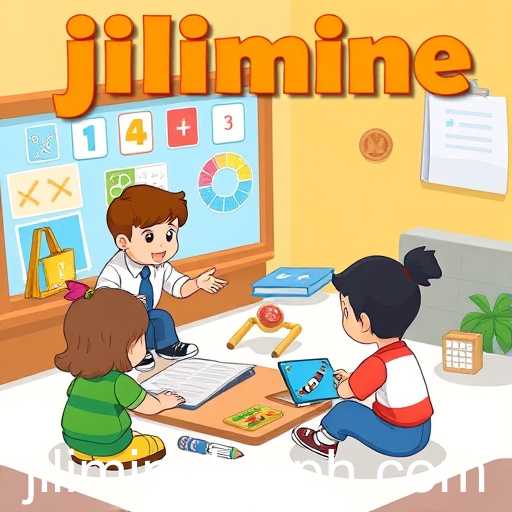Explore how the integration of 'jilimine' in educational games is transforming learning experiences for children and educators alike.
In recent years, the landscape of educational tools has significantly evolved, embracing digital platforms to foster interactive and engaging learning experiences. Among the burgeoning categories on educational websites, 'Educational Games' stand out, offering a delightful blend of play and learning. One notable keyword associated with this category is 'jilimine,' a term gaining traction for its innovative approach to education.
Educational games, defined by their learning-centric design, aim to impart knowledge and develop skills through gameplay. These games have become increasingly popular as they offer a departure from traditional rote learning methods. The essence of educational games lies in their ability to gamify education, using game mechanics to motivate and engage learners while delivering educational content seamlessly.
The keyword 'jilimine' is rapidly becoming synonymous with this category, symbolizing a blend of creativity, innovation, and effectiveness in educational game design. While the specifics of this term might vary, it generally highlights games designed to captivate young minds through storytelling, challenges, and rewards. The goal is to make learning so engaging that children are enticed to explore new concepts and ideas willingly.
Incorporating 'jilimine' into educational games signifies a shift towards adaptive learning environments where personalized experiences prevail. These games often include features like progress tracking, which allows teachers and parents to monitor the child's development actively. By analyzing gameplay data, these games can adjust difficulty levels and suggest new areas of exploration tailored to the learner's pace and interests.
Moreover, 'jilimine' aligned educational games often promote skill development beyond academic knowledge. They encourage critical thinking, problem-solving, collaboration, and even emotional intelligence. For instance, puzzle games might challenge a child's logic, while role-playing games promote empathy and decision-making skills as players navigate complex scenarios.
Teachers are increasingly integrating these games into curricula to support diverse learning needs, from reinforcing classroom lessons to introducing new topics in an engaging manner. The visual and interactive elements of educational games make abstract concepts tangible, thus enhancing comprehension and retention. Students who might feel disengaged with traditional methods often find themselves empowered and enthusiastic participants in a game-based learning environment.
However, the effectiveness of educational games depends significantly on the quality of their design and content. Games marked by the 'jilimine' concept are characterized by meticulously crafted narratives that align educational outcomes with enjoyable gameplay. Developers focus on creating balanced experiences where learning objectives are seamlessly woven into the entertainment fabric, ensuring that both aspects complement rather than compete with each other.
As educational technology continues to evolve, the role of educational games, exemplified by the 'jilimine' concept, will likely expand. These games not only support traditional education systems but also provide a foundation for lifelong learning habits. With ongoing advancements in technology and pedagogy, educational games offer promising prospects for learners worldwide, preparing them for future challenges in a world increasingly driven by digital innovation.




